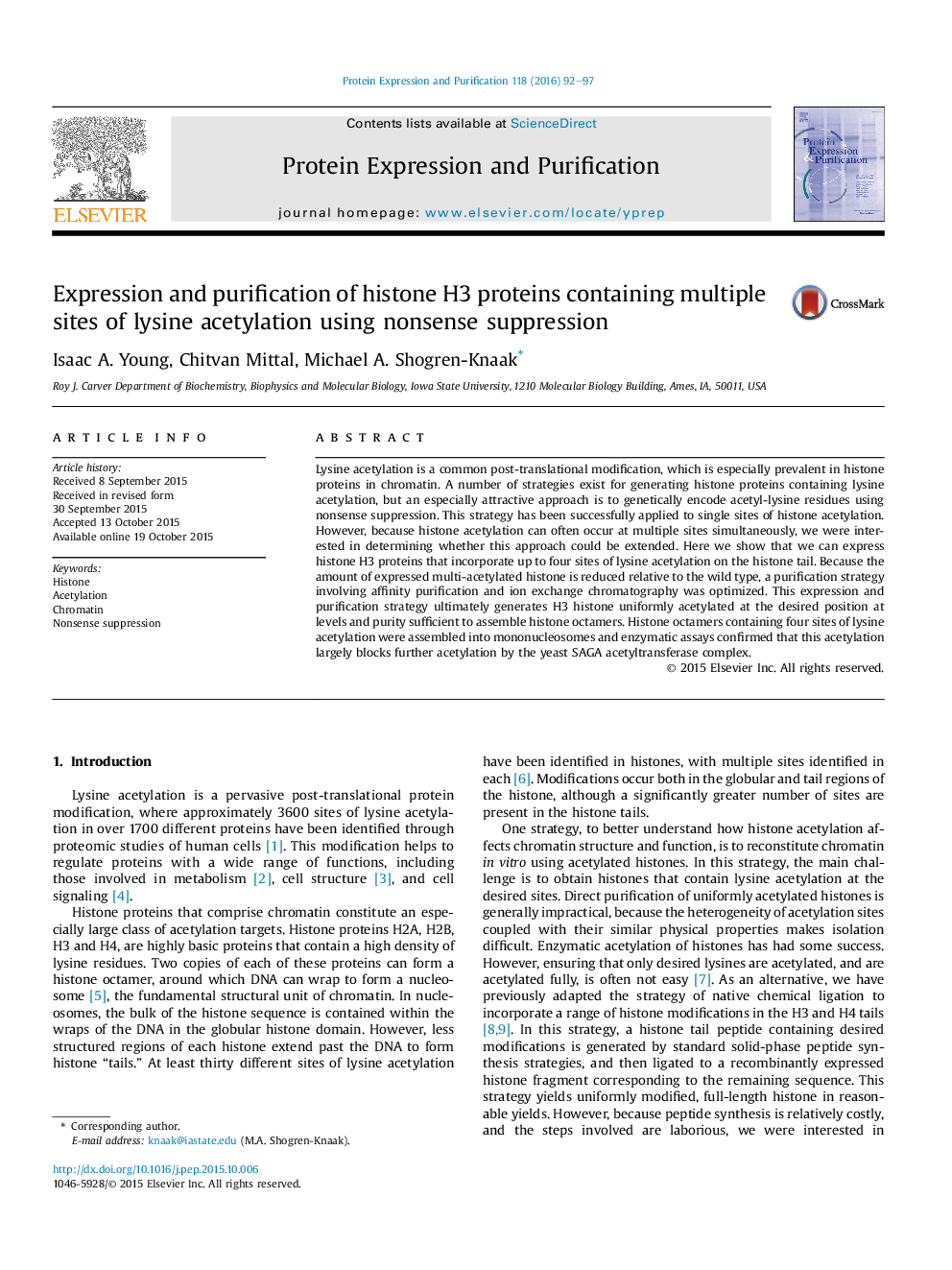| Article ID | Journal | Published Year | Pages | File Type |
|---|---|---|---|---|
| 2020323 | Protein Expression and Purification | 2016 | 6 Pages |
•H3 histone with up to four lysine acetylation sites expressed by nonsense suppression.•Tetra-acetylated histones purified to homogeneity with yields of 0.06 of cells.•Histones with fewer acetylations purified to homogeneity with much greater yields.•As expected, tetra-acetylated H3 mononucleosomes blocks nucleosome acetylation.
Lysine acetylation is a common post-translational modification, which is especially prevalent in histone proteins in chromatin. A number of strategies exist for generating histone proteins containing lysine acetylation, but an especially attractive approach is to genetically encode acetyl-lysine residues using nonsense suppression. This strategy has been successfully applied to single sites of histone acetylation. However, because histone acetylation can often occur at multiple sites simultaneously, we were interested in determining whether this approach could be extended. Here we show that we can express histone H3 proteins that incorporate up to four sites of lysine acetylation on the histone tail. Because the amount of expressed multi-acetylated histone is reduced relative to the wild type, a purification strategy involving affinity purification and ion exchange chromatography was optimized. This expression and purification strategy ultimately generates H3 histone uniformly acetylated at the desired position at levels and purity sufficient to assemble histone octamers. Histone octamers containing four sites of lysine acetylation were assembled into mononucleosomes and enzymatic assays confirmed that this acetylation largely blocks further acetylation by the yeast SAGA acetyltransferase complex.
